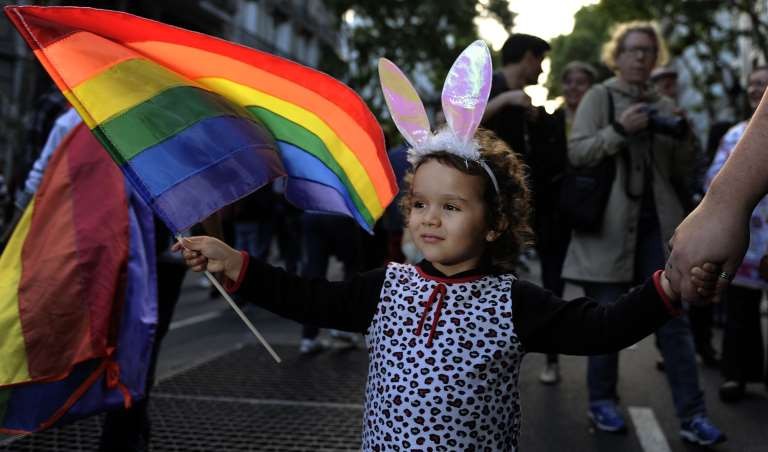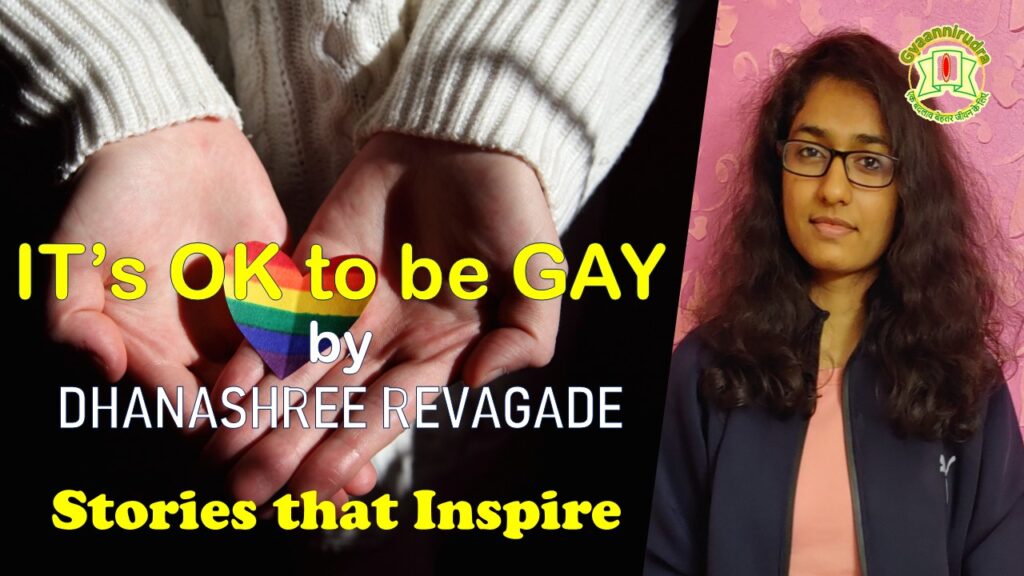“It’s OK to be gay. We are different in many ways. Doesn’t matter if you’re a boy, girl or somewhere in between, we all are part of one big family” sings Lindsay Amer, the creator and star of Queer Kid Stuff. Queer Kid Stuff is an original LGBTQ+ and social justice webseries for kids and families. I got to know about Lindsay through her TED Talk, “Why kids need to learn about gender and sexuality.” The talk compelled me to ask myself, “Why can’t I start discussing this with kids?” Yes, it was she who gave me the idea of explaining LGBTQ issues to kids. She made me aware of my responsibilities towards the younger generation.
In my opinion, we haven’t yet reached a point where parents are comfortable in talking to kids about gender, sexuality and sexual orientation. As Lindsay rightly pointed out, many people might opine, “Let kids be kids.” According to The American Academy of Pediatrics, by age 5 to 6 years most children are able to recognize their true gender identity. We all know that parents are the co-authors of their child’s life and play a critical role in their self-discovery. Therefore, I want to ask parents: “Don’t you want your kids to embrace their true self, identify and express themselves freely instead of feeling ashamed of who they are?”; “Won’t it be better if they know about diversity in sexuality, sexual orientation and learn to celebrate it with pride?”; “What if your kid, who is only exposed to heterosexuality, goes to a park one fine day and sees two boys kissing?”; “Or if your seven year old goes to the bathroom and is greeted by a man dressed like a woman?”; “How would your child react and how will it impact him/her?” “Have you ever thought about all this?” So, before something natural comes across as an accidental shock to them, why not explain kids about the LGBTQ+ reality? It will instill in them the ability to accept and respect people who identify differently.
Taking account of this absence of parental communication and Lindsay Amer’s Ted Talk, I decided to do my bit towards creating awareness among kids about LGBTQ+ and homosexuality. I knew the inherent challenges involved. It took me a good amount of time from resolving to spread awareness to actually taking the action. Asking questions, encouraging them to think and listening to their confusions would be more conducive to developing an understanding, I thought. I might not have an answer to every question about the topic, but the willingness to contribute in making them kind, empathetic and socially aware adults through this discussion gave me a bit of inner satisfaction.
So, one fine evening, I gathered all kids in my home declaring, “I’m going to tell you an interesting story.” Here’s the story I narrated:
“One day in the drawing class at school, the teacher gave homework to each student to draw his/her family. Next day all students came up with the drawings of their families. Not all drawings were the same. Some drawings depicted families having a mom, a dad, and children, some depicted only mom or only dad, whereas some had two moms or two dads.”

I paused mid-way and asked, “Is a family with two moms or two dads possible?” There was a mix of expressions on their faces. I didn’t expect any answers but I encouraged them to think.
Then an interesting conversation followed. I explained to them what having two mums or two dads meant. I introduced them to the terms LGBTQ and homosexuality. Using Lindsay’s videos from the Queer Kid Stuff, I explained them what the alphabets ‘L’, ‘G’, ‘B’, ‘T’ and ‘Q’ represent. To give an analogy, I asked one of them about his favorite color. In response to his answer, I further asked, “Why not something else?” Through this little activity, I made them understand that liking or getting attracted to something or someone happens naturally; that human emotions are innate and cannot be forcefully altered. I made them understand that there is nothing strange/wrong for a boy to wear dresses and for a girl to wear suits. I also explained why one shouldn’t laugh or fear on seeing transgender people or eunuchs in public spaces. To this, one of them recounted an experience and said, “I didn’t laugh when I saw a transgender person in a train but I became extremely scared because they were nudging others for money.” He then asked why they behave like that. I asked him, “What if you grow up and identify yourself as different and your parents don’t accept you and you roam around homeless, without money in a world where people don’t see you as a human, in a world that doesn’t treat you respectfully, then how would you behave?” Acceptance, equal treatment, respect, love, and pride is to be fostered, I added.
I also pointed out how our movies focus on heterosexual relationships and why the movies like ‘Ek Ladki Ko Dekha Toh Aisa Laga’, ‘Love, Simon’ and books like ‘Prince Henry: A Gay Fairytale’ are very much needed for the young kids to understand homosexuality. I further added that some decades back people were forced to believe that homosexuality is a disease and there were practices like ex-gay therapies for those who believed homosexuality can be cured. The kids were enthusiastically listening, understanding and curiously asking the questions that were pouring in their beautiful minds.
I heartily enjoyed my conversation on LGBTQ+ with kids at my home and it greatly satisfied me. Lastly, I urge parents to talk to children about this and tell them, “Be what you wish to be and accept others as they choose to be.”
Let us all strive to reach a point where parents don’t ask, “Isn’t my child too young to learn about LGBTQ?” but instead demand, “Why isn’t my child taught about it yet?”
As Lindsay says, “Let’s spread radical queer joy!”

Dhanashree Revagade is the student of B.Tech (Computer Engineering) at Indian Institute of Information Technology (IIIT), Pune


